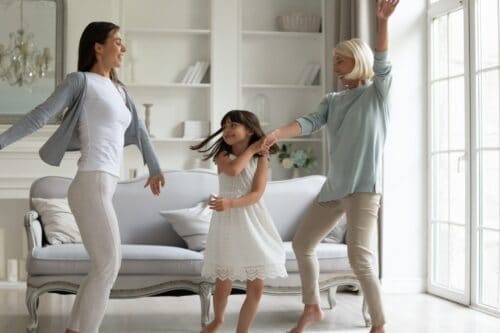The Burden of Aging in Place

No one is useless in this world who lightens the burden of it to anyone else.
~Charles Dickens
Aging in Place
I have always liked (and tried to live) the Dickens quote above. To come from a place of contribution in one’s work and life, to me, is the highest calling. But what I would like to purpose here is a twist on the idea when it comes to helping the older adults in our lives.
At some point which is the natural progression, seniors who we were once dependent on, now become dependent on us (this includes physically and often financially). In my own case, I was called on to help with multiple seniors for nearly a decade. I worked part-time as my duties became increasingly needed. And the level of need increased substantially as the weeks turned into months and years. Each trip to their house found them (3 seniors) in various stages of decline or acute crisis–meaning the bar was in a constant state of flux- decline and new “normals” were progressively lower.
Like most families, getting old at home was not something my parents and family members planned for–it just happened…
The “Burden Issue” of Aging in Place
Author Carla Fried, in an article titled: Aging in Place Could Inflict a Huge Burden on Your Family (Dec. 15, 2020 found at rate.com) notes that despite the plethora of “Best Places” for seniors to live/retire, most older adults will continue to stay put. Fried says
“That’s a blind spot that can drag down multiple generations within a family. The 60-somethings who refuse to game-out the best moves to make now for their 80- and 90-year-old future selves are (unconsciously) transferring those hard decisions onto their children and grandchildren.”
So here is where the twist comes in; older adults who end up on the receiving end of care (dependence) because they desired aging in place (independence) and failed to prepare for it–can turn the tables on the “burden issue.” Because we all hear that older adults want 2 things: 1) Independence at home 2) not to be a burden, but to make that a reality they MUST DO what Fried has pointed out. Namely, they need to game-out the best moves to make now for their 80- and 90-year-old future selves.
The Opportunity Cost to Aging in Place
Fried details what the opportunity costs are to waiting too long (past 60) to make age-friendly choices on where and how to live. When aging in place becomes a “crisis buy” which it does in most cases, it becomes more costly to everyone involved and can affect multiple generations. Lost wages from time off caregiving (which is done predominately by women) equates to lower savings/investing rates which digs into retirement and can reach even further into grandkids being able to attend college. Not to mention the social cost of time away from marriages and cohorts/friends.
The ecology of aging in place is a system, which means the process of growing older at home happens in the context of other lives. Aging in place DOES NOT HAPPEN IN ISOLATION, it is a misnomer to equate it with independence, in fact, it is just the opposite. Interdependence happens as a matter of degree and is an inverse relationship to the level of preparedness done by the “young-old” who are still very capable of making age-friendly choices on living arrangements. If 50-60 somethings are genuinely interested in not being a burden to multiple generations in their system, then the author provided some age-savvy things to consider:
1) Can you really afford to stay put?
The goal should be that you can cover basic living expenses from guaranteed retirement income: Social Security and a pension if you have one, and any required minimum distributions from traditional 401(k)s and IRAs. What are the property taxes like in your neighborhood? Help from a financial planner to pencil out the numbers would be a smart thing to do in advance.
2) Is it safe to stay put?
Only 1% of homes in America have at least 5 aging-in-place basic elements. Most older homes built in the 1940-50s were designed for able bodied young homeowners not for aging residents staying put. Few have “visitabilty” a) bathroom on the main b) 36-38-inch doorways c) non-barrier entrance. Is your home a “Peter Pan” home for someone who thinks they will never grow old?
3) Can you help your kids by moving close(r)?
Fried suggests perhaps not moving in with family but considering alternatives like granny flats or accessory dwelling units to maintain some level of independence. She notes; “If you are game for a bigger retirement relocation, focus on future needs, not just today’s wants. Warm weather is a popular criterion for Best Places lists, but a nonprofit consortium that tracks each state’s level of support and services for long-term care needs found Florida’s overall at the bottom. The states with the highest scores across five broad categories (cost of care, support for family caregivers, etc.) were Minnesota, Washington and Wisconsin.”
Baby Chasing Last Thoughts
I would also add if you plan on “baby chasing” (moving to where the grandkids are) which is a popular social trend, consider 2 things:
1) The “Social Capital” (friends, colleagues, cohorts, acquaintances, church friends, known shopkeepers, etc.) you will be leaving behind = Social Suicide
2) Are your adult children’s jobs secure? Or will you find yourself uprooted with the next career move?
Bottom line is to make your future a part of your current philosophy.
Age-friendly choices now on your part can have ripple effects (for good or bad) for generations to come…This time it’s you, the older adult, that can ease the burden…That’s the twist!
_______________________________________________________________________________________
